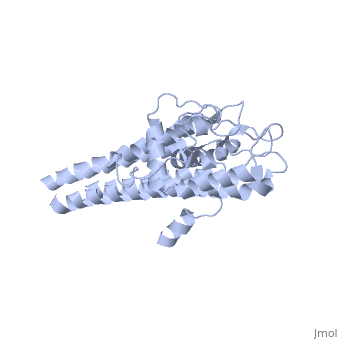User:Sara Christine Norkelun/Sandbox 1
From Proteopedia
| Line 1: | Line 1: | ||
| - | '''Testing''' | ||
| + | == VlsE == | ||
| + | Vmp-like sequence, Expressed | ||
<Structure load='1L8W' size='500' frame='true' align='right' caption='Insert caption here' scene='Insert optional scene name here' /> | <Structure load='1L8W' size='500' frame='true' align='right' caption='Insert caption here' scene='Insert optional scene name here' /> | ||
Revision as of 16:38, 14 August 2012
VlsE
Vmp-like sequence, Expressed
|
Introduction
Lyme disease is a systemic bacterial infection that can lead to chronic dehabilitating effects if left untreated. The symptoms are varied and affect multiple systems, sometimes making diagnosis difficult. Some initial symptoms are not unique to Lyme disease, and include fever, headache, lethargy, and soreness. The main identifying symptom is a characteristic bullseye rash that develops locally near the site of infection. If the infection is allowed to progress, more serious symptoms develop such as arthritis, swollen joints, and even neurological symptoms such as depression and psychosis.
The disease is caused by the bacterium, Borellia burgdorferi, the spirochete responsible for most Lyme disease in most of the Eastern region of North America. Borellia b. has a complex life cycle, transferring from different hosts. However, the main vector of disease transmission to humans is the deer tick, Ixodes scapularis, particularly the young nymph stage.
Involvement in Lyme Disease
Antibody response, using Liang paper
Structure Using Eicken paper
Clinical Relevance ELISA test Picture from wiki entry on ELISA
|

